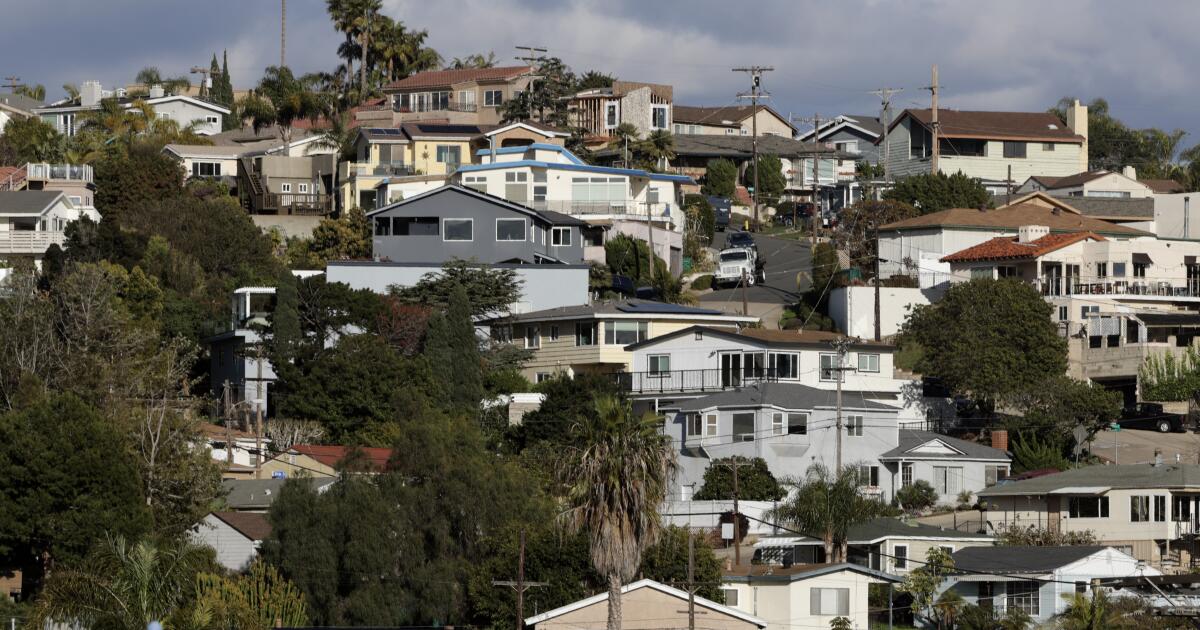
It’s been 12 years since California housing has been in “buyer’s market” conditions.
Industry folklore infers that buyers are in control of the market when house hunters can pick from listing inventory that equals six months or more of sales. If supply is three months or less, the homebuying logic says it’s a “seller’s market.” In between, a so-called “balanced” market is in play.
So to hunt for buyer’s markets, my trusty spreadsheet applied those curious definitions to California Association of Realtors stats tracking sales of single-family homes plus some related economic data going back to 1990.
Let’s start by noting that California’s supply of homes for sale was 2.8 months in September. That’s a seller’s market, according to real estate mythology.
You have to go back to February 2012, when supply was 7.5 months, to find the last time California buyers were in control of the market, by this definition.
Over these past dozen years, California housing has been a seller’s market 38% of the time and “balanced” 62%. In that same period, the Realtors’ median selling price for existing single-family homes rose at a swift 8% annual pace.
Clearly, as California house hunters know, buyers were not driving the market.
Lots of options
So what does history tell us about typical California buyer’s markets compared with supposedly seller-friendly times?
Homes for sale are plentiful. Supply averaged 10.2 months in buyer’s market periods stretching back 34 years vs. 2.4 months when sellers are in control.
And there’s no need to rush. Since 1990, listed houses have sat for an average 63 days in a buyer’s market vs. 23 for sellers.
Meanwhile, prices are down. Buyer’s markets average 3.7% depreciation in the previous 12 months vs. 15%-a-year appreciation in seller’s market.
Mortgage rates also are dipping when buyers control the market. Since 1990, the 30-year fixed loan rate was down 0.3 percentage points in the previous year for buyers vs. a 0.1 point gain when sellers are in control.
Buyer beware
Those seemingly enticing buyer’s market conditions, however, fail to get house hunters into a buying mood.
California averaged a 26% lower sales rate in buyer’s markets vs. seller’s markets. Even builders pull back, filing 27% fewer permits to construct single-family homes in buyer’s markets.
So why does real estate chill in buyer’s market conditions? Well, that “time to buy” period typically parallels weaker economies that can spook house hunters and owners alike.
California’s unemployment rate averaged 7.7% in a buyer’s market vs. 6.4% when sellers were in control. Job creation statewide shrinks by 62% in buyer’s markets.
Also, ponder this national yardstick of house-hunter interest from the Conference Board: 3% of consumers polled had homebuying plans during California buyer’s markets vs. 5% in seller’s markets.
Buyer’s bust
The spreadsheet says California was in buyer’s market status one-third of the time since 1990. But it’s a dying breed of house-hunting conditions, when you look at this math, by decades …
1990s: 79% of the decade was a buyer’s market during a decade marked by a painfully slow rebound from a housing crash off late 1980s highs.
2000s: 27% buyer’s market with a huge homebuying surge became a bubble that burst into the Great Financial Crisis as the decade ended.
2010s: 3% buyer’s market as housing rebounded from the Great Recession’s carnage.
2020s: No buyer’s markets through September 2023 amid all the pandemic gyrations, including a period of historically low mortgage rates.
So, buyers, be careful what you wish for.
History shows a “buyer’s market” designation is a poor label for bad times for household pocketbooks.
So any buyer’s market should come with a warning label – and a financial calamity may be required to create another one for California house hunters.
Bottom line
House-hunting’s transformation includes several market trends including people moving less often, consumers accessing detailed market info, near-instant cash buyers and tighter lending standards.
Maybe the buyer/seller-market math should morph, too.
From 1990 through 2006, just before the bubble burst, California was a “buyer’s market” in 49% of all months and a “seller’s market” 17% of the time — using the traditional 6-month/3-month template and Realtor data.
Looking at the past 12 post-crash years — assuming you’d want to match that pattern — a buyer’s market would be 3.25 months-plus of supply and a seller’s market would be 2.25 months or less.
If nothing else, this evolving gap in homebuying supply is another reminder of today’s steep house-hunting challenges.
Jonathan Lansner is the business columnist for the Southern California News Group. He can be reached at jlansner@scng.com





